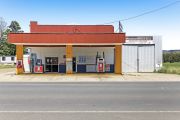
Reserve Bank cut a turning point for commercial property markets
For commercial property borrowers and lenders, the Reserve Bank’s decision is more about the sizzle than the substance.
Commercial property finance is not priced off the RBA’s cash rate target and very few borrowers will find their repayments trimmed in coming weeks.
For this sector, the RBA’s decision to lower the cash rate is more a marker of a fundamental shift to a stable, even cheaper, cost of debt – a shift that was already underway.

The RBA decision also promises an improvement in consumer sentiment that, hopefully, flows through to the purchase of new housing, and to increased rents and values, in the shopping centres and office towers.
The stabilisation of finance costs and the bottoming of values, along with looming supply constraints, have been the key themes of forward-looking commercial property investors for over a year.
“The rate cut will be important to the psyche of investors,” Dexus chief executive, Ross Du Vernet, told analysts on Tuesday.
Jean-Pierre Alouan, a director of LINK Commercial Mortgages, and a specialist in the sector for the past 25 years, says the RBA decision is an indicator of the end of the anti-inflation cycle and the start of a new cycle of economic growth.
“It doesn’t mean an immediate and commensurate cut in interest rates that are paid by commercial property investors” he says.
“But likely a gradual change over time to property yields and values.”
Similarly, Ben Burston, the chief economist at global real estate group, Knight Frank, sees the RBA decision as a “turning point for commercial property markets … although the pace of recovery will differ for different locations and sectors”.
The cost of debt was already falling ahead of the RBA move.
Firstly, as today’s graphic from CBRE shows, the key market benchmark from which commercial property debt is priced, the 90-day Bank Bill Swap Bid Rate (BBSY), is shuffling lower.
Secondly, the other component of commercial property debt pricing, the margin, is falling due to increased competition from lenders.
But the shift takes time and will be far from uniform.
Some listed Real Estate Investment Trusts (REITs) which, because of hedging, have an average cost of debt below current levels, could find that their price of debt rises over the next year.
Citi, in a note issued ahead of the latest round of REIT results, forecast that debt costs would stabilise but remain elevated and continue to impact earnings.
The increased competition for commercial property lending comes firstly from the meteoric rise in the number of non-bank lenders.
Mark Wizel, a director of independent commercial property adviser, Advise Transact, warns that the uncertainties surrounding the non-bank sector, and “how much exposure they have to the commercial property market”, is one of the challenges of the new interest rate era.
At the same time, the sector is attracting renewed interest from the domestic banks.
“Margins are compressing because of the amount of capital available for debt,” says Andrew McCasker, the managing director of Debt and Structured Finance in the Pacific Region, for global real estate heavyweight, CBRE.
“The domestic banks are very competitive on both pricing and appetite.”
The Commonwealth Bank, which is leading the shift, increased its exposure to commercial property by around 4 per cent in the December half, to $98.4 billion.
The bank, at its half-year result, noted that commercial property trading activity had started to increase as institutions and offshore buyers weighed back into the market.
“Increased trading activity over the half contributed to exposure growth … which was diversified across sectors and counterparties.”
Westpac also reported an extra $1.1 billion of commercial property exposure in the December quarter, to $86.6 billion.
Both banks can build on what are very low levels of stressed and impaired loans despite the years of falling values.
Michael Wood, the chief executive of Madigan Capital, which is an institutional real estate debt investment manager, says the big banks in general had been “very prudent and disciplined” in their lending in recent years.
He cautioned those looking to invest in commercial real estate debt to undertake “deep due diligence” on their proposed non-bank manager, including an assessment of the fee load being charged, the capability to deal with impaired loans, and the potential for conflicts of interest.
Many hope that the change in the finance environment will help boost the nation’s supply of housing.
“I don’t think that the interest rate cut has any material impact on the cost of construction finance and the viability of many projects,” says Beau Quarry, the managing director of Solido Development Finance which provides debt finance for residential developers in Sydney, Melbourne and South East Queensland.
“But we believe it will help purchaser sentiment, particularly in the first home buyer market which is non-existent at the moment.”
Advise Transact’s Wizel says the impact on new housing development will be immaterial “due to the disconnect between cost and revenue”.
“The biggest beneficiary of the interest rate cut will be on buyer sentiment for well-leased investment properties under $20 million,” he adds.
Longer term, the change in the interest rate environment, could shift allocations.
Commercial property debt has been an attractive high return play over the past decade, particularly with capital values, and thus equity, under pressure.
But as the returns on debt contract, capital could shift back to equity.
“Credit has had a heyday,” says Cathy Houston, a managing director of MA Financial. “There will be some movement out as rates reduce, but private credit is a growing, and increasingly mainstream, sector.”
Link Commercial Mortgages’ Alouan expects to see “money starting to find its way out of low risk/low return safe havens such as long-term bond investments and into higher yielding commercial property”.
Robert Harley is a former AFR property editor. He can be contacted at rob@rharley.com.au











